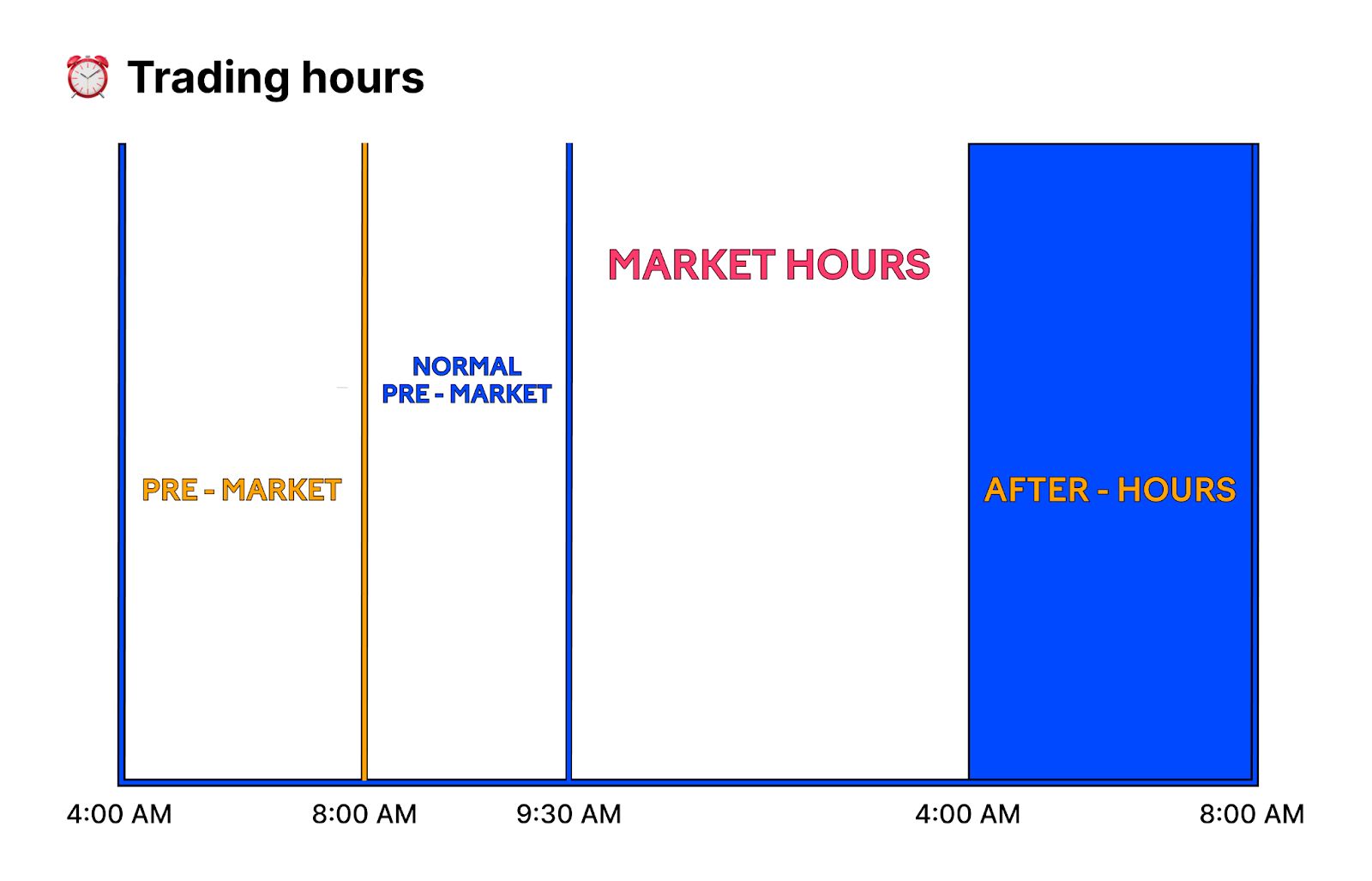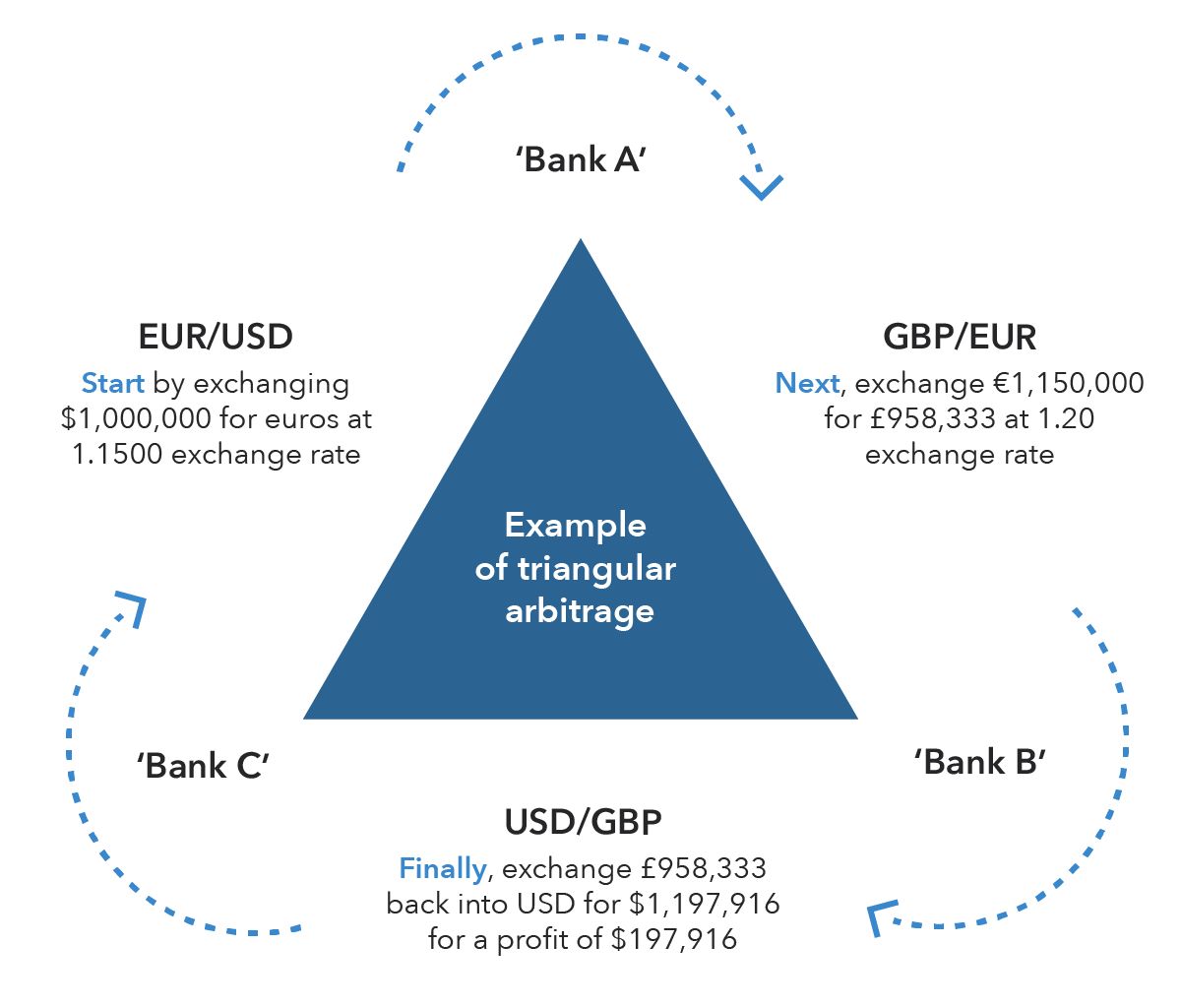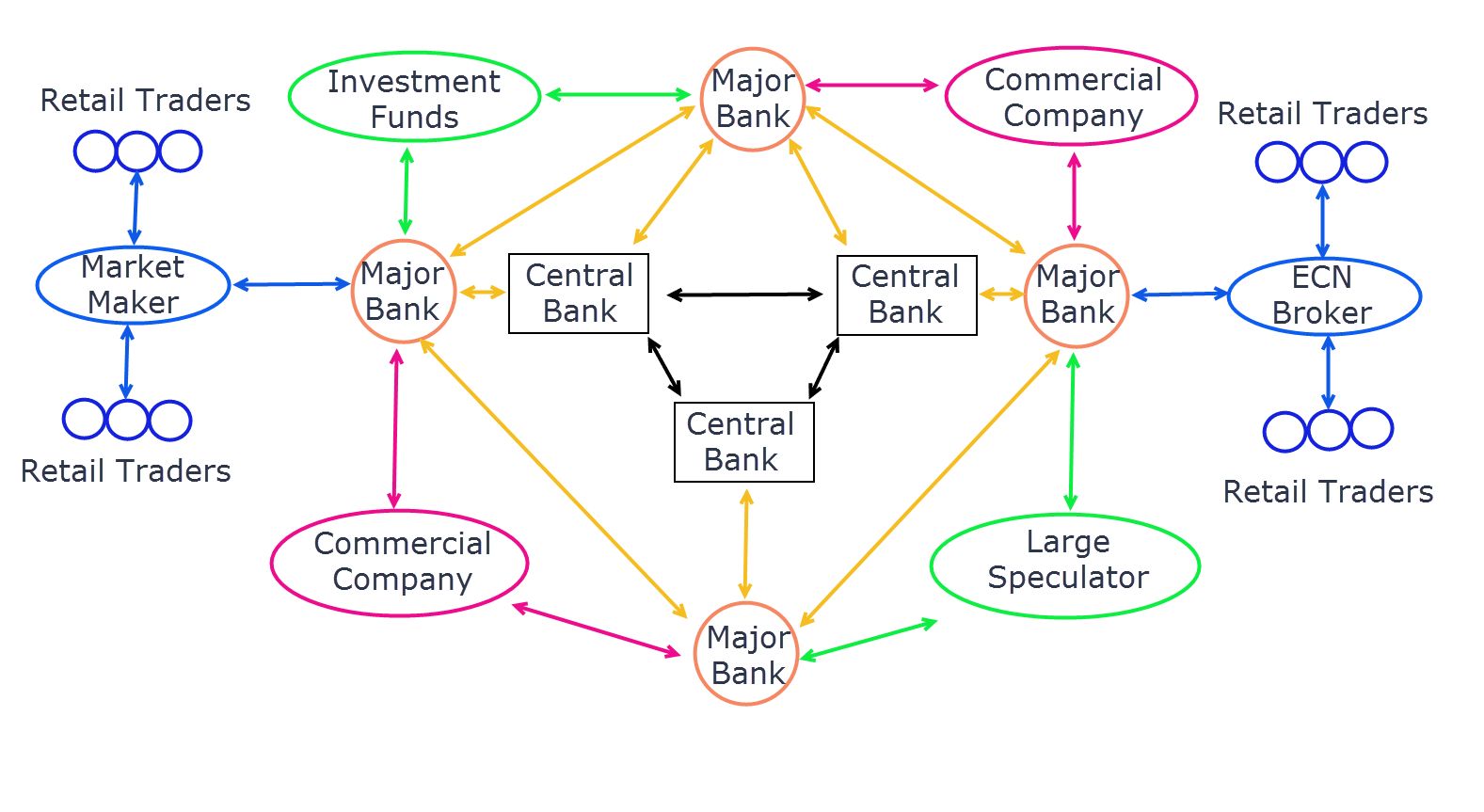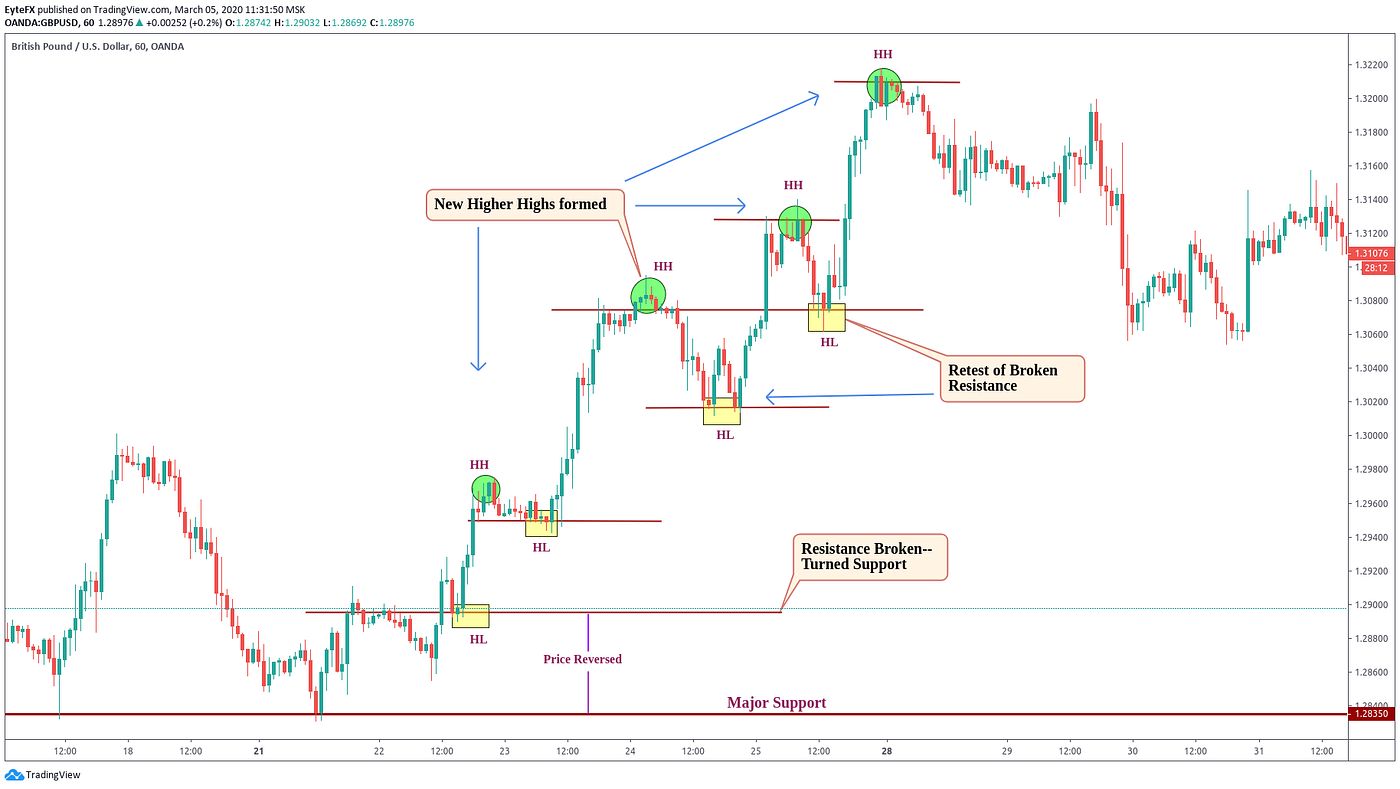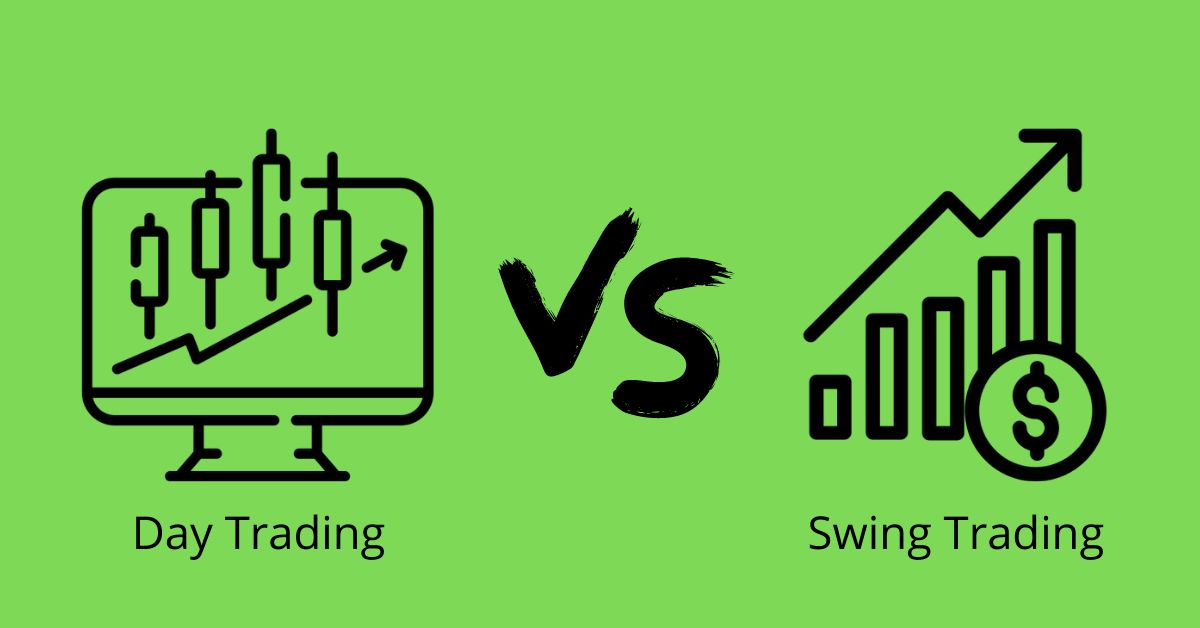After Market Trading: What Is It?
After market trading, also known as extended hours trading, refers to the buying and selling of stocks outside of regular trading hours. Traditional stock exchanges, such as the New York Stock Exchange (NYSE) and NASDAQ, have fixed trading hours during which investors can trade stocks. However, after market trading allows investors to continue buying and selling stocks beyond these regular hours.
This extended trading period typically occurs before the opening bell and after the closing bell of the regular trading sessions. It provides an opportunity for investors to react to after-hours news and events that can affect stock prices. This additional trading window can be advantageous to individuals who are unable to execute trades during regular trading hours due to work commitments or time zone differences.
After market trading is facilitated by electronic communication networks (ECNs) that match buy and sell orders. These platforms enable investors to execute trades directly, without the need for an intermediary. However, it’s important to note that after market trading volumes are usually lower compared to regular trading hours, which can result in wider spreads and increased price volatility.
One key difference between after market trading and regular trading hours is that after-hours trades may not be immediately reflected in the stock’s closing price from the regular trading session. The after-hours trade data is separate and may impact the stock’s opening price the following day. It’s essential for investors to consider this when making investment decisions based on after-market trading activity.
While after market trading provides flexibility and accessibility, it also carries certain risks. Liquidity can be thinner during extended hours, potentially leading to higher bid-ask spreads and less favorable prices. Moreover, news releases and corporate earnings reports are generally released after market hours, which can lead to sudden price movements and increased volatility during after-market trading.
Overall, after market trading offers investors an additional opportunity to engage in stock trading outside of regular hours. It allows for greater flexibility and the ability to react to market-moving news and events. However, it’s crucial to understand the risks associated with after hours trading and to exercise caution when participating in this market.
Pros and Cons of After Market Trading
Pros:
1. Flexibility: After market trading provides flexibility for individuals who are unable to trade during regular market hours due to work or other commitments. It allows investors to manage their portfolios outside of typical trading hours.
2. Reaction to News: Since after market trading occurs after regular trading hours, investors can react to news and events that impact stock prices. This can be advantageous in situations where significant developments occur outside of regular trading hours.
3. Extended Trading Opportunities: After market trading extends the opportunities for investors to buy or sell stocks. This additional trading window can provide valuable options for investors looking to make timely investment decisions.
4. Pre-Market Indications: After market trading can provide insights into how the market will likely perform at the Open. Investors can analyze pre-market indications to gain a better understanding of stock price movements.
Cons:
1. Reduced Liquidity: After market trading typically has lower trading volumes compared to regular market hours. This can result in reduced liquidity, wider spreads, and potentially higher transaction costs.
2. Increased Volatility: The thinner trading volumes during after market hours can lead to increased price volatility. This volatility can make it more challenging to execute trades at desired prices and can increase the overall risk of trading.
3. Limited Access: After market trading is usually only available to certain types of investors, such as institutional investors and individuals with advanced trading platforms. Retail investors may have limited access to after-hours trading, limiting their ability to participate.
4. Price Discrepancies: The prices of stocks traded during after market hours may not always reflect the closing prices from the regular trading session. This can result in price discrepancies that may impact investment decisions based on after-market trading activity.
It is essential for investors to carefully consider the pros and cons of after market trading before deciding to engage in this type of trading. While it offers flexibility and the opportunity to react to news, it also comes with risks such as reduced liquidity and increased volatility. Conducting thorough research and employing sound trading strategies can help investors navigate after market trading effectively.
Factors Affecting After Market Trading
After market trading is influenced by various factors that can impact stock prices and trading activity during extended hours. Understanding these factors is crucial for investors looking to participate in after market trading and make informed decisions. Here are some key factors that can affect after market trading:
1. News and Earnings Releases:
News releases and corporate earnings reports outside of regular trading hours can significantly impact after market trading. Positive or negative news can lead to rapid price movements, creating opportunities or risks for investors. It’s important to stay updated on market news and corporate announcements to understand their potential impact on after-hours trading.
2. Market Sentiment:
Market sentiment, which reflects the overall attitude and confidence of investors, can influence after market trading. Positive market sentiment can result in increased buying interest, while negative sentiment can lead to selling pressure. Monitoring market sentiment can provide insights into after-hours trading patterns.
3. Global Events:
Global events, such as geopolitical developments, economic indicators, and central bank announcements, can affect after market trading. Significant events occurring in different time zones can impact investor sentiment and influence stock prices during extended trading hours.
4. Earnings Season:
Earnings season, when companies release their quarterly financial results, can have a significant impact on after market trading. Positive earnings surprises or disappointments can lead to substantial price movements during extended hours. Investors closely monitor earnings releases to assess the financial health of companies and make informed trading decisions.
5. Economic Data:
Key economic data releases, such as employment reports, GDP figures, and inflation data, can influence after market trading. Strong or weak economic indicators can impact investor sentiment and drive stock prices during extended trading hours.
6. Institutional Trading Activity:
Institutional investors, including hedge funds and mutual funds, can have a notable impact on after market trading. Their trading decisions and actions during extended hours can influence market dynamics and stock prices. Monitoring institutional trading activity is essential for understanding potential trends in after-hours trading.
It’s important for investors to be aware of these factors and stay informed about market developments that can affect after market trading. Analyzing and interpreting relevant information can help investors make more accurate predictions and navigate the after-hours trading environment effectively.
Tips for Successful After Market Trading
After market trading presents unique opportunities and challenges for investors. To make the most of extended trading hours, consider the following tips for successful after market trading:
1. Plan and Research:
Develop a trading plan and conduct thorough research before engaging in after market trading. Identify stocks of interest, analyze their performance, and stay updated on relevant news and events. Having a well-defined strategy can help you make informed decisions during extended trading hours.
2. Utilize Technology:
Utilize advanced trading platforms and technology that provide access to after market trading. These platforms offer real-time data, order execution capabilities, and various tools for analysis. Leveraging technology can enhance your ability to navigate after-market trading effectively.
3. Focus on Volatile Stocks:
After market trading is known for increased price volatility. Focus on stocks that are more susceptible to price movements during extended hours. These volatile stocks can present trading opportunities for those who are skilled at quick decision-making and risk management.
4. Set Realistic Expectations:
Keep in mind that after market trading volumes are typically lower, which may result in wider spreads and more significant price fluctuations. Set realistic expectations and adjust your trading strategy accordingly. Be prepared for potentially slower trade execution and be cautious of sudden price movements.
5. Understand Market Depth:
Be aware of the market depth during after market trading. Thin liquidity can result in wider spreads, making it crucial to analyze market depth before executing trades. Monitor bid and ask prices, and consider placing limit orders to have more control over the execution price.
6. Manage Risks:
Implement proper risk management techniques to protect your capital. Set stop-loss orders to limit potential losses and consider position sizing based on your risk tolerance. Additionally, diversify your portfolio to mitigate the impact of individual stock price movements.
7. Stay Updated on News:
Stay informed about news and events that can impact after market trading. Monitor financial news, earnings releases, and economic indicators that can affect stock prices. Being aware of the latest developments can help you make better trading decisions and capitalize on market opportunities.
Remember that after market trading carries certain risks, and it’s important to approach it with caution. Practice risk management, continuously educate yourself, and adapt your strategies based on market conditions. With proper planning and a disciplined approach, you can increase your chances of success in after market trading.
How to Participate in After Market Trading
Participating in after market trading requires understanding the process and having access to the necessary trading tools. Here are the steps to participate in after market trading:
1. Open an Account:
Begin by opening a brokerage account with a broker that offers after market trading. Ensure that the broker provides access to the specific exchanges or platforms where you wish to trade during extended hours.
2. Verify Account Access:
Confirm whether your brokerage account allows after market trading. Some brokers may have specific eligibility criteria or account requirements for participating in extended trading hours. Verify that you meet these criteria to gain access to after market trading.
3. Familiarize Yourself with Trading Platform:
Get acquainted with the trading platform or software offered by your broker. Ensure that you understand how to place orders, execute trades, and access real-time market data during after market hours. Familiarizing yourself with the platform can help you make informed trading decisions.
4. Research Stocks:
Conduct thorough research on the stocks you are interested in trading during after market hours. Analyze their historical performance, recent news, and any upcoming events or earnings releases that may impact the stock price. This information will help you make more informed trading decisions.
5. Plan Your Trades:
Develop a trading plan that outlines your strategies for after market trading. Determine your entry and exit points, set profit targets, and establish risk management measures such as stop-loss orders. Planning your trades in advance can help you stay disciplined and reduce the risk of impulsive decisions.
6. Monitor Market Volatility:
Keep an eye on market volatility during after market hours. As trading volumes are generally lower, price movements can be more volatile. Monitor bid and ask prices, track changes in the spread, and assess market depth to ensure you are aware of market dynamics.
7. Execute Trades with Caution:
When executing trades during after market hours, exercise caution and consider utilizing limit orders. A limit order allows you to specify the maximum price at which you are willing to buy or sell a stock. This can help you avoid unexpected price fluctuations and ensure you trade at desired levels.
8. Evaluate Your Performance:
Regularly evaluate your performance in after market trading. Analyze your trades, review your trading plan, and assess the effectiveness of your strategies. This self-evaluation will help you identify areas for improvement and refine your approach to after market trading.
Remember, after market trading carries certain risks, including lower liquidity and increased price volatility. It is essential to conduct thorough research, establish a trading plan, and practice risk management to participate in after market trading successfully.
Understanding After Market Trading Hours
After market trading hours, also known as extended hours trading, refer to the time period outside of the regular trading hours of stock exchanges. While the specific hours may vary, after market trading generally occurs before the opening bell and after the closing bell of the regular trading sessions. Understanding after market trading hours is essential for investors looking to engage in extended hours trading.
Pre-Market Trading:
Pre-market trading refers to the period before the regular market opens. It allows investors to trade stocks before the official opening time of the stock exchange. Pre-market trading hours typically start anywhere from 4:00 a.m. to 9:30 a.m. Eastern Time (ET) and last until the regular trading hours commence.
After-Hours Trading:
After-hours trading occurs after the regular market closes and extends into the evening. This time period allows investors to continue trading stocks outside of the traditional trading hours. After-hours trading hours typically start from around 4:00 p.m. to 6:30 p.m. ET.
It’s important to note that after hours trading hours may vary depending on the stock exchange or trading venue. Different exchanges and platforms may have their own specific trading hours for after-market trading.
Key Considerations:
1. Trading Liquidity: During after market trading hours, trading volumes are generally lower compared to regular market hours. This can result in lower liquidity and potentially wider spreads. It’s important to assess market depth and be aware of the potential impact on trade execution.
2. Price Volatility: Extended hours trading is known for its increased price volatility. With lower trading volumes, even a relatively small number of trades can have a significant impact on stock prices. This can present opportunities for skilled traders but also increases the risk of sudden price movements.
3. Limited Order Types: Some order types may not be available during after market trading hours. It’s crucial to understand which order types are accepted during extended hours and adjust your trading strategy accordingly. Common order types used during after market trading include market orders and limit orders.
4. Reporting and Price Impact: It’s important to understand that after-hours trades may not be immediately reflected in a stock’s closing price from the regular trading session. Prices of stocks traded during after market hours may impact the stock’s opening price the following day.
5. Brokerage Requirements: Not all brokerage firms offer after market trading to their clients. It’s essential to confirm beforehand whether your brokerage account provides access to extended hours trading and if any specific requirements or permissions are needed.
Understanding the hours of pre-market trading and after-hours trading is vital for investors interested in participating in after market trading. Being aware of liquidity conditions, price volatility, and order types available during extended hours can help investors make more informed trading decisions during after market trading sessions.
Risks and Precautions of After Market Trading
While after market trading presents opportunities for investors, it also comes with its own set of risks. Understanding these risks and taking necessary precautions is essential when participating in extended hours trading. Here are some key risks and precautions to consider:
Risks:
1. Lower Liquidity:
After market trading volumes are typically lower compared to regular trading hours. This can result in reduced liquidity, wider bid-ask spreads, and potentially higher transaction costs. Thin liquidity can make it more challenging to enter or exit positions at desired prices.
2. Increased Price Volatility:
Extended hours trading is characterized by increased price volatility. With fewer market participants during after market hours, even small trades can have a significant impact on stock prices. This heightened volatility can lead to rapid price fluctuations and increase the risk of executing trades at unfavorable prices.
3. Limited Access to Information:
Access to timely information may be limited during after market trading. News releases, corporate earnings reports, and analyst coverage may not be widely available during extended hours. This lack of information can make it more challenging to make informed investment decisions.
4. Wide Spreads:
The bid-ask spread, which represents the difference between the highest price a buyer is willing to pay and the lowest price a seller is willing to accept, can be wider during after market trading. The wider spreads can result in higher trading costs and may impact the execution price of trades.
Precautions:
1. Educate Yourself:
Thoroughly educate yourself about after market trading and understand the risks involved. Familiarize yourself with the trading platforms, order types, and trading rules for extended hours trading. Knowledge and preparation are key to managing risks effectively.
2. Research and Analysis:
Conduct in-depth research and analysis of the stocks you plan to trade during extended hours. Stay updated on company news, earnings reports, and market developments that could impact stock prices. A solid understanding of the underlying fundamentals can help you make more informed trading decisions.
3. Use Limit Orders:
Consider using limit orders to control the execution price of your trades. Limit orders allow you to set the maximum price you are willing to pay to buy a stock or the minimum price you are willing to accept when selling. This can help you avoid unfavorable price fluctuations and ensure trades are executed based on your desired criteria.
4. Practice Risk Management:
Implement proper risk management techniques when participating in after market trading. Set stop-loss orders to limit potential losses, diversify your portfolio to avoid overexposure to any single stock, and carefully consider your position sizing. These risk management measures can help protect your capital and mitigate potential losses.
5. Monitor Market Depth:
Pay attention to market depth during after market trading. Assess the bid and ask prices, track changes in the spread, and monitor trading activity. Monitoring market depth can provide insights into the liquidity and pricing dynamics, helping you make more informed trading decisions.
By understanding the risks associated with after market trading and taking appropriate precautions, investors can navigate this trading period more effectively. It’s crucial to approach after market trading with caution, conduct proper research, and apply sound risk management strategies to minimize potential drawbacks.
Differences Between After Market Trading and Regular Trading Hours
After market trading and regular trading hours differ in several key aspects. Understanding these differences is crucial for investors looking to engage in after market trading. Here are the main distinctions between after market trading and regular trading hours:
1. Trading Hours:
The most apparent difference is the trading hours themselves. Regular trading hours follow a set schedule established by the stock exchange. In the United States, for example, regular trading hours typically occur from 9:30 a.m. to 4:00 p.m. Eastern Time (ET). After market trading, on the other hand, takes place outside of these regular hours, encompassing pre-market and after-hours trading sessions.
2. Availability:
Regular trading hours are accessible to all market participants, including individual investors, institutional investors, and market makers. After market trading, however, may have limited availability. Not all brokers or trading platforms offer after market trading to their clients. Some brokers may have specific eligibility criteria or account requirements to participate in extended hours trading.
3. Liquidity:
Liquidity is another significant difference between after market trading and regular trading hours. During regular trading hours, market liquidity is typically higher due to the presence of more market participants. In after market trading, however, trading volumes are usually lower, resulting in reduced liquidity. This lower liquidity can lead to wider bid-ask spreads and potentially impact trade execution.
4. Price Volatility:
Price volatility tends to be higher during after market trading compared to regular trading hours. With lower trading volumes, even a relatively small number of trades can have a more significant impact on stock prices. This increased volatility can create both opportunities and risks for traders, as price movements may be more pronounced and less predictable.
5. News and Events:
News releases and corporate earnings reports are typically released outside of regular trading hours. As a result, after market trading allows investors to react to news and events that can impact stock prices. This additional trading period during extended hours provides an opportunity to adjust trading strategies based on the latest information.
6. Trading Platforms:
After market trading may require the use of specific trading platforms or electronic communication networks (ECNs) that facilitate extended hours trading. These platforms may offer different features, order types, and access to real-time market data during after market hours. It’s important to ensure that your chosen broker provides access to the necessary trading platform for after market trading.
Understanding the differences between after market trading and regular trading hours allows investors to make informed decisions when engaging in extended hours trading. It’s important to consider factors such as liquidity, volatility, and availability to effectively navigate after market trading and take advantage of the unique opportunities and challenges it presents.
Notable After Market Trading Strategies
After market trading presents different opportunities and requires specific strategies compared to regular trading hours. Here are some notable after market trading strategies that investors can consider when participating in extended hours trading:
1. Gap Trading:
Gap trading involves taking advantage of price gaps that occur between the previous day’s closing price and the current day’s opening price. Traders look for stocks that have experienced significant overnight price movements or news releases and aim to capitalize on these price gaps during after market hours.
2. Earnings-Related Trades:
After market trading provides an opportunity to react to earnings reports or corporate announcements released after regular trading hours. Traders can strategize based on expected earnings outcomes and implement trades during extended hours to potentially profit from price movements resulting from earnings surprises or disappointments.
3. Momentum Trading:
Momentum trading involves capitalizing on short-term price momentum during after market trading. Traders identify stocks that exhibit strong upward or downward price movements during extended hours and aim to ride the momentum by entering positions in the same direction as the price trend.
4. News-Based Trading:
News-based trading focuses on reacting to market-moving news or events that occur outside of regular trading hours. Traders monitor news releases, economic announcements, or geopolitical developments and take advantage of the price volatility and potential trading opportunities that may arise during after market hours.
5. Scalping:
Scalping involves making quick trades to capture small price movements during after market hours. Traders aim to profit from the bid-ask spread by entering and exiting positions rapidly. Scalping requires careful monitoring, nimble execution, and attention to market depth.
6. Extended-Hours Breakout Trading:
Breakout trading strategies focus on identifying price breakouts during extended hours. Traders look for stocks that break through key support or resistance levels, indicating a potential continuation of price movement. By entering positions at the early stages of a breakout, traders aim to profit from the subsequent price trend during after market trading.
It is important to note that after market trading strategies come with their own risks and challenges. Traders should thoroughly understand the strategies they employ, conduct thorough research, and practice proper risk management techniques to increase the likelihood of success in after market trading.
Common Mistakes to Avoid in After Market Trading
After market trading offers unique opportunities, but it also comes with its fair share of challenges. To navigate the extended hours trading successfully, it is crucial to be aware of common mistakes that investors should avoid. Here are some important mistakes to steer clear of when engaging in after market trading:
1. Failing to Conduct Adequate Research:
One of the biggest mistakes investors make is diving into after market trading without sufficient research. Failing to understand the stocks being traded, their recent performance, and any relevant news or events can lead to poor decision-making and potential losses. Conduct thorough research and stay informed about market developments to make well-informed trading decisions.
2. Neglecting Risk Management:
Ignoring risk management principles can be detrimental in after market trading. The increased price volatility during extended hours trading can lead to larger-than-expected price swings. Setting stop-loss orders, managing position sizes, and diversifying your portfolio are crucial risk management strategies to protect your capital from substantial losses.
3. Chasing After Price Gaps:
While price gaps in after market trading can present opportunities, chasing after them blindly can be risky. Often, early price gaps may be filled or reversed quickly, resulting in losses for traders who enter positions without careful analysis. Avoid chasing after price gaps without considering other technical or fundamental indicators to validate the trading decision.
4. Overtrading:
Overtrading, or excessively making trades without a clear strategy, is a common mistake in after market trading. Frequent and impulsive trading can lead to increased transaction costs and emotional decision-making. Instead, focus on quality trades based on thorough analysis and sound trading strategies.
5. Ignoring Liquidity Concerns:
Liquidity tends to be lower during after market trading compared to regular trading hours. Ignoring liquidity concerns and not accounting for wider spreads can result in suboptimal trade executions and increased trading costs. Carefully monitor market depth and adjust trade sizes to ensure proper execution in the context of after market trading liquidity conditions.
6. Failure to Adapt to Market Conditions:
Market conditions during after market trading can differ from regular trading hours. Traders need to adapt their strategies accordingly. Failing to adjust trading techniques, risk management, and decision-making approaches to fit the unique characteristics of extended hours trading can significantly impact trading outcomes.
Avoiding these common mistakes can help investors enhance their after market trading performance. By conducting thorough research, implementing effective risk management strategies, and remaining adaptable to market conditions, traders can increase their chances of success in after market trading.







